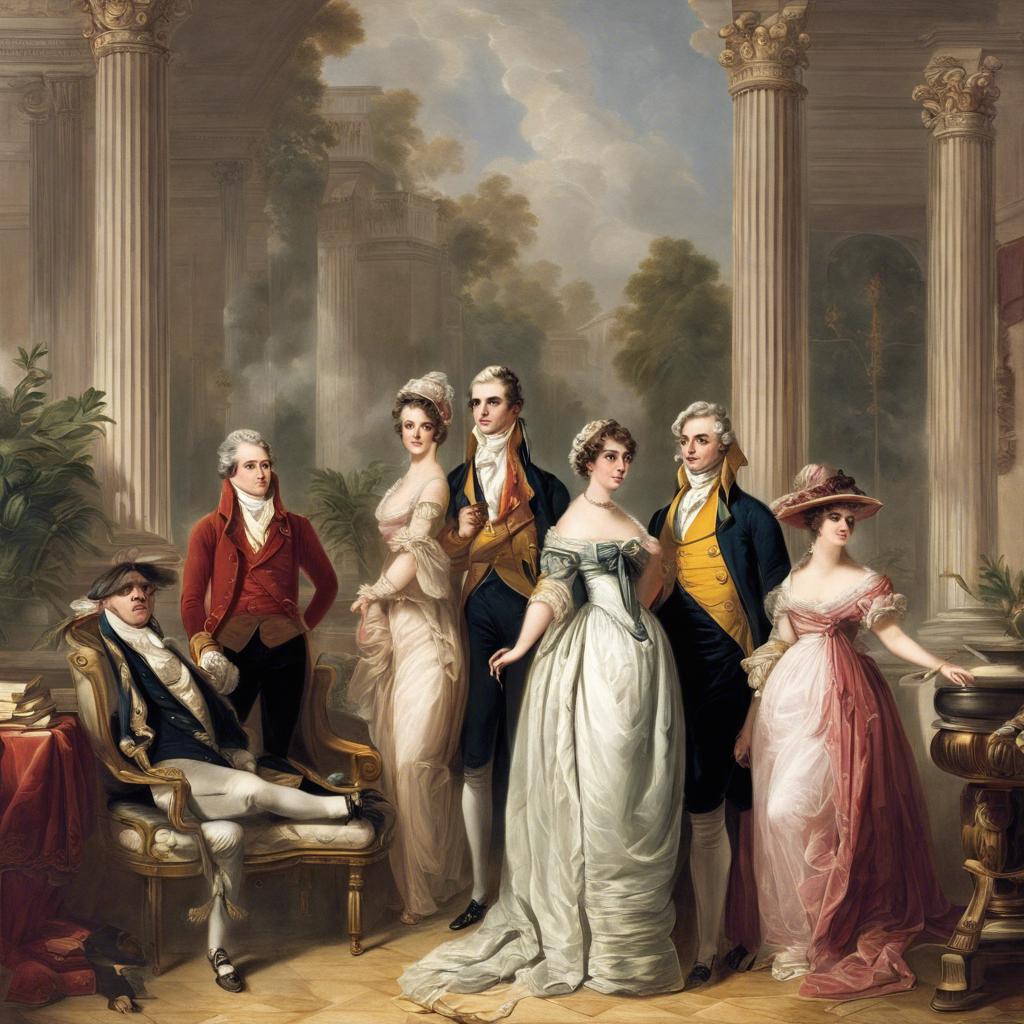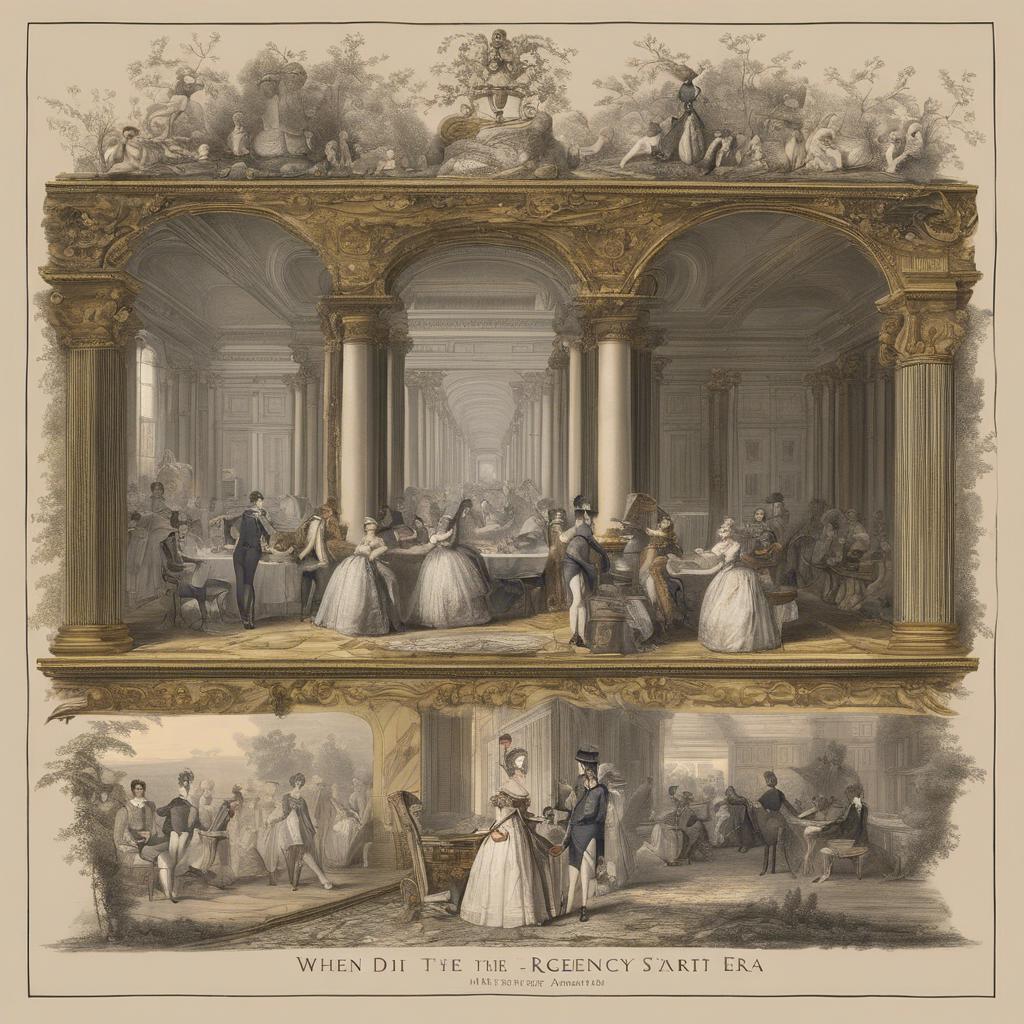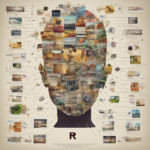The Regency Era is a period of history that is marked by its unique cultural, political, and social nuances. Often associated with the reign of King George IV in Great Britain, the Regency Era is a time of transition and transformation. In order to understand the dynamics of this fascinating period, it is essential to pinpoint the exact moment when the Regency Era officially began. By tracing the historical events and circumstances that led to the emergence of this era, we can gain a deeper insight into the complexities and nuances of this significant period in history.
Step Into the World of Cheryl Bolen
Dive into the enchanting stories of love, intrigue, and elegance set in the Regency Era. Cheryl Bolen's novels offer timeless romance and captivating tales that will leave you wanting more.
Explore Cheryl Bolen's Books Now
Origins of the Regency Era
In the early 19th century, following the reign of King George III, the Regency Era officially began. This period lasted from 1811 to 1820 when the Prince of Wales, George IV, acted as regent due to his father’s declining mental health. The Regency Era is known for its distinctive style in architecture, fashion, and literature, making it a fascinating time in British history.
During the Regency Era, societal norms and cultural influences underwent significant changes. The era saw the rise of Romanticism in literature, with authors like Jane Austen and Lord Byron producing timeless works that reflected the spirit of the age. Additionally, advancements in technology and industry began to shape the landscape of England, paving the way for future innovations.
One of the defining characteristics of the Regency Era was the extravagant lifestyles of the aristocracy and upper classes. This period was marked by lavish parties, elegant balls, and grand estates that showcased the wealth and opulence of the elite. However, beneath the surface glamour, political unrest and social inequalities brewed, laying the groundwork for the reforms and revolutions that would come in the years to follow.
Key Events Leading to the Regency Period
The Regency period in British history began in 1811 when King George III became mentally incapacitated, leading to the appointment of his son, Prince George, as Prince Regent. This marked a significant shift in power and leadership within the monarchy, as the Prince Regent assumed many of the king’s duties and responsibilities. The Regency era is known for its distinctive architectural, fashion, and cultural trends, which reflected the tastes and influences of the Prince Regent.
During the Regency period, several key events influenced the political and social landscape of Britain. The Napoleonic Wars, which took place between 1803 and 1815, played a significant role in shaping the political climate of the era. The Industrial Revolution also had a profound impact on British society, leading to rapid urbanization and technological advancements. Additionally, the emergence of Romanticism in literature and the arts marked a cultural shift towards emotional expression and individualism.
The Regency period is often associated with the works of prominent writers such as Jane Austen and Lord Byron, as well as the elegant architecture of John Nash. The era was characterized by a sense of opulence and extravagance, with lavish balls, elaborate fashion, and grand country house parties becoming the norm among the upper classes. Despite the social and political uncertainty of the time, the Regency period is remembered as a period of cultural richness and artistic innovation.
Impact of the Regency Era on Society and Politics
The Regency Era in the United Kingdom began on February 5, 1811, when King George III was declared unfit to rule due to his mental illness. His son, George IV, was appointed as Prince Regent to rule in his place. The Regency Era lasted until George III’s death in 1820, when George IV officially became king. This period marked a significant shift in society and politics, with many changes and developments taking place.
During the Regency Era, there was a growing sense of social change and upheaval. The era is often associated with lavish parties, extravagant fashion, and a focus on leisure and pleasure. At the same time, there was also a rise in political activism and social reform movements, such as the abolition of the slave trade and the fight for women’s rights. The Regency Era saw the beginnings of the industrial revolution, which brought about significant changes in the economy and society.
In terms of politics, the Regency Era was marked by instability and conflict. The Napoleonic Wars were ongoing during this time, and they had a profound impact on European politics and society. In the United Kingdom, there was a growing divide between the ruling elite and the working classes, leading to tensions and protests. The era also saw the rise of radical political movements, such as the Luddites and the Peterloo Massacre. the Regency Era was a time of great change and transformation in both society and politics.
Understanding the Transition from Georgian to Regency Period
In the early 19th century, England underwent a significant shift in fashion, architecture, and societal norms, marking the transition from the Georgian to the Regency period. The Regency era officially began in 1811 when King George III was deemed unfit to rule and his son, the Prince of Wales, became Prince Regent. This period lasted until 1820, when the Prince Regent ascended the throne as King George IV.
During the Regency era, there was a departure from the formal and extravagant styles of the Georgian period, with a focus on simplicity, elegance, and a revival of classical designs. This shift was influenced by the Prince Regent’s love for all things French and his desire to emulate the fashionable trends of European courts. The Regency style was characterized by delicate fabrics, high-waisted dresses, and intricate detailing, reflecting the romantic and whimsical sensibilities of the time.
The transition from the Georgian to the Regency period not only impacted fashion and design but also had broader implications for society as a whole. The Regency era was marked by a growing interest in literature, art, and architecture, with notable figures such as Jane Austen and John Nash making significant contributions to the cultural landscape of the time. This period also saw the rise of social reforms and political movements, setting the stage for the Victorian era that would follow.
In Summary
the Regency Era began in 1811 with the Prince Regent assuming power as a result of King George III’s illness. This pivotal moment in British history marked a significant shift in politics, society, and culture, shaping the course of the early 19th century. The Regency Era is known for its elegance, extravagance, and influence on art, literature, and fashion. It is a period that continues to captivate historians and enthusiasts alike, offering a glimpse into a tumultuous yet fascinating time in British history. As we delve deeper into the Regency Era, we uncover a world of opulence, romance, and change that ultimately paved the way for the Victorian Era to follow.


